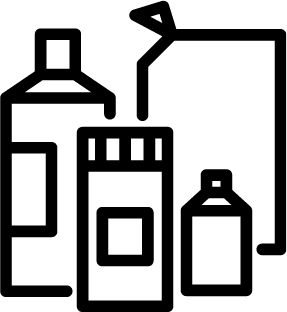Price :
QTY :
CART TOTALS :
CART TOTALS :


Your shopping bag is empty
Go to the shop HomeView
HomeView Stone Selection
View
Stone Selection
View Natural Characteristics
View
Natural Characteristics
View Delivery & Lead Times
View
Delivery & Lead Times
View Ordering Process
View
Ordering Process
View Sealing
View
Sealing
View1. Is natural stone suitable for my garden and driveway?
Yes, natural stone is suitable and a perfect option for gardens, driveways, patios and other high traffic areas. Natural stones from The Stone Flooring are available in several finishes including honed, tumbled or antiqued, allowing you to transform the decor of any space. Natural stones require little care and are a long-lasting solution for your patios. To avoid hassles, and to limit maintenance, we recommend that the natural stone is sealed before installation, to make it wear & weather resistant.
2. Is natural stone better than concrete?
Both natural stone and concrete come with their benefits. However, natural stone does have some advantages over concrete. Firstly, natural stone weathers well over time, and will retain its natural colour. It is also resistant to chipping and damage. Concrete can become lacklustre over the years, and can chip easily.
3. Do you have a showroom I can visit?
We understand that choosing the right slab or tile for your space needs careful consideration. You can visit our showroom at Raeburn Road South, Ipswich, Suffolk, IP3 0ET to see our entire range of stones. If you cannot visit the showroom, we can send up to 4 free samples for you to see the colours and textures of the stones before you place an order.
4. Does natural stone retain its original colour indefinitely?
As with all natural products, natural stones will change colour over time, owing to weathering, use, and how they are maintained. However, natural stone is known to age beautifully. So while it may not retain its colour, it can look even better with time.
5. Is stone paving slippery?
Stones with a grainy, rough texture are naturally slip-resistant. For the smoother stones, we provide an anti-slip finish for your safety. It is still recommended that you continue to maintain the stones regularly, to eliminate the possibility of moss or algae settling on the paving.
1. My slabs are not exactly the same colour as the sample I received. Why?
All our stones are naturally-sourced, which means that no two slabs are alike. This is what makes natural stone so beautiful and unique. Remember that even the sample will be a portion of a larger slab with variations, and can only give you a general idea of what the slabs will look like in your space.
2. My stone is darker than the sample I was expecting. Why?
The beauty of natural stone lies in its exclusivity. All naturally-occurring stones have their individual characteristics, with variations in colour, texture, and pattern. This means that the stone you have is truly one-of-a-kind. The sample can help you compare the colours and patterns beforehand, but remember that even that piece will be a portion of a larger slab with variations. It may not be fully indicative of the patterns and colours in the larger slab.
3. My stone slabs have some markings on them, are they faulty?
Unlike machine-made products, naturally-occurring stones cannot be standardised. We do our best to source the best quality stones for you, but since they are products of natural processes, the colours, patterns and textures may vary. Certain aspects that may seem faulty to you can simply be a variation in pattern. Consider the markings as a sign that your slabs are rare and unique.
1. How will my stone be delivered?
We deliver our stones across the UK directly from our quarries. The stones will be delivered through a reliable transport system and will be unloaded using a tail lift, depending on the quantity you have ordered. We deliver between 9:00 a.m. to 5:00 p.m. Monday to Friday (except bank holidays) and require a signature upon receipt.
2. How quickly can I get my order delivered?
Delivery dates will be specified at the time of placing the order. However, the date or time specified by the company are estimates only.
3. My house is on a road with width restrictions, can you still deliver to me?
If our transport system is able to safely deliver your order to your home, we will do so. However, all deliveries are as per the driver’s discretion to a kerb or nearest flat surface available. The idea is to spot a convenient space for safe unloading of the goods. We offer kerbside delivery, so the delivery drivers will only be able to unload the order for you. You will have to organise the relevant labour to move the slabs from the kerb onto your property.
1. How do I decide the number of slabs I need to order?
We suggest that you measure the area you want to use the slabs for to determine the quantity you need and add 10% extra for any wastages and breakages you might face during installation. We have provided a tile calculator on every product page on our website, where you can calculate the number of slabs and M2 area as per your need. It is normal to have some chips left over after laying, depending on the size and shape of the area. You can also get in touch with our sales representatives for advice on the quantities and sizes that will work for your space.
1. Does natural stone need to be sealed?
It is always recommended to seal natural stones for long-lasting durability. This will protect them from fading, staining, growth of bacteria, harsh weather elements, and daily wear and tear. Sealants make the stones water-resistant and can prevent moss and algae from settling on the surface. It is the best way to keep your stone slabs looking as good as new.
2. How long after installing the stone can I apply a sealant?
This will depend on the type of stone you have chosen. Some stones require pre-sealing before the installation process, whereas others can be sealed 24 hours after installation. Please check with our team on the sealing requirements for your stone.
3. What happens if you seal stone before/during efflorescence?
Any residue or dirt sitting on the surface of your slab will be trapped once the slab is sealed. Similarly, sealing before or during efflorescence will lock in the salts beneath the coating, making the slabs look hazy. Use an efflorescence cleaner before sealing to avoid the risk of trapping, or worse, highlighting any imperfections in your tiles.
4. What happens if I seal stone that is dirty or wet?
It is important to seal stone only after it has been thoroughly cleaned and dried, so that the dust and moisture does not get locked in with the sealant. This can ruin the appearance of the slab, and may lead to damage in the future. First, mop the floor with a detergent and warm water mix, and then wipe it clean. Apply the sealant only after the floor is completely dry.
5. Is it possible to over apply the sealant?
Yes, over applying sealants will cause efflorescence or white marks on the surface that can be difficult to remove. Ideally, natural stone will require 2-3 applications of sealant on average, depending on the type of stone. After every application, the stone will absorb the sealant and become dry. The rule of thumb is to make repeat applications after drying until the stone starts to repeal the sealant.
6. What happens if I put more sealant on one area than another?
It is important for the stone to be evenly sealed for durability. If the sealant is unevenly applied, the area with less sealant may begin to weather faster, get stained, and be prone to damage.
7. What happens if the paving gets wet before the sealant has had a chance to dry?
If the paving gets wet before the sealant dries, the sealant can become stained or discoloured, leading to an unpleasant look. In this case, do not apply a new coat of sealant over the old. You will need to use a solvent to dissolve the sealant and then mop it away. Wait a few days for the water to evaporate and then apply a fresh coat of sealant. As far as possible, avoid sealing during the rainy season, or if there is even a remote chance of the paving getting wet during the process. In such instances, and to avoid any further damage, it is best to call a professional to help you.
8. Should I seal the bottom of the slabs for extra protection?
You can seal the bottom of the slabs only during the initial phase of installation, for certain types of stones. This can reduce the risk of staining, efflorescence or water absorption during the installation process, which is when the slabs are more prone to any of these risks.
9. How soon after sealing can I jet-wash the stone?
After sealing has been completed, keep water away from the stone for at least 24 hours. Avoid harsh cleaning for another 3 days. Jet washing is not required on the surfaces once the sealant is applied. Strong jet washing can wash away the sealant layers, exposing the slabs to damaging elements. For daily maintenance, simply dilute some liquid detergent in a bucket of warm water and mop the floor. Allow to dry, and then buff with a soft cotton cloth if needed.
success
Thanks For Your Submission
OKAYGet to know about new collections and exclusive offers. Sign up for email alerts.